UC Blogs
Taking on the Tachinids
They're hairy. They're bristly. They're attention-getters. They probably draw more "yecchs!" than most insects. All the more reason to love...
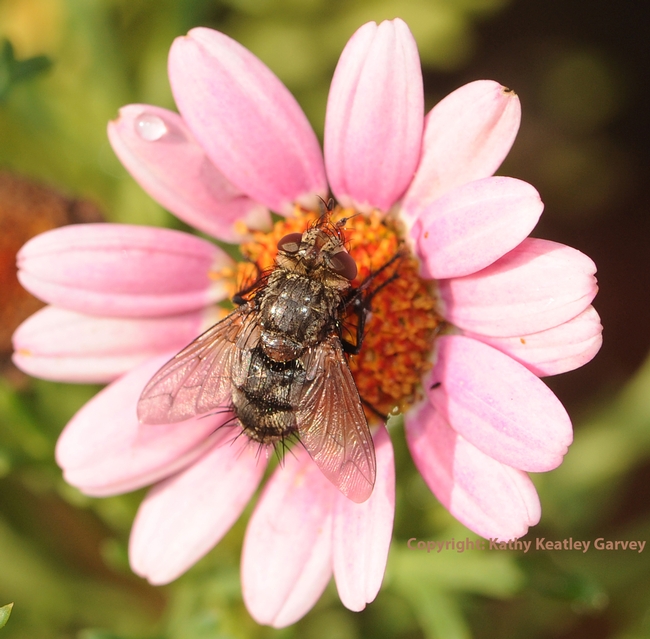
Tachinid fly "in the pink." (Photo by Kathy Keatley Garvey)
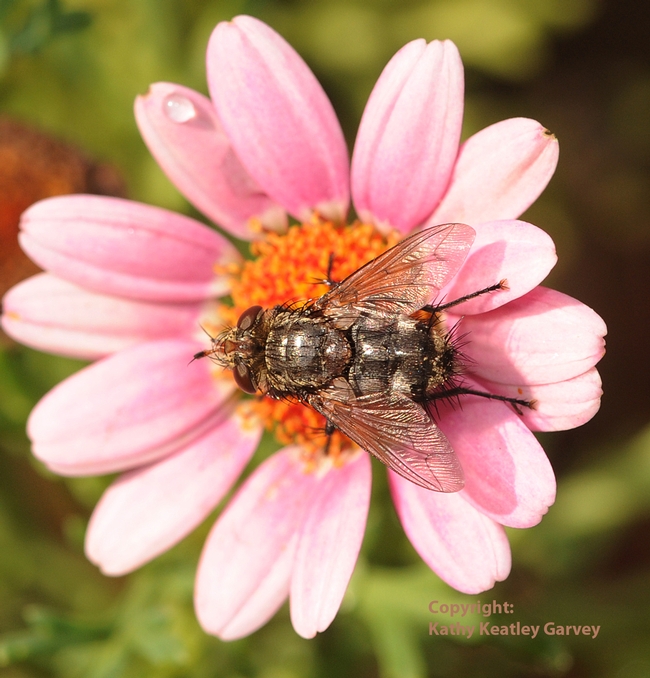
Tachinid fly foraging. (Photo by Kathy Keatley Garvey)
Growing in Miniature
Terrariums have always fascinated me, especially when they contain tiny buildings, oriental bridges, driftwood, unusual rocks AND plants. I also have a fondness for Wardian cases, that were popular during Victorian days, displaying unusual plants, moss, and often small reptiles. They originally were built to transport plant specimens from Europe and Asia to the U.S., or other locations. The moist enclosed containers would maintain the plants for some time, until they reached their destination.
Part of the fun is the hunt for tiny, small plants that will fit your glass container and any tiny decorative accessory to add to the plants. Ferns, succulents, violets, orchids and air plants work well as the living part of your miniature “home”, and small pieces of bark, rocks or a bird nest, along with tiny ceramic insects, reptiles or figurines will complete your miniature world.
During the holidays I purchased some large plastic, clear ornaments (4x4x1), at a craft store. What fun it was to plant them with moss, succulents, air plants and carefully embellish them with driftwood and rocks. These miniature growing globes were fun to create and give as gifts. They will last for years with only minimum attention and an occasional sprinkling of water.
We all desire to connect with nature and to nurture living things, especially during winter months when it’s difficult to be out in the garden. Consider creating your own terrarium or miniature garden. You will find great resource books in our local libraries.
Conservation ag practices highlighted at 'CASI' launch
University of California advisors and specialists, farmers, scientists and agriculture professionals gathered Friday in Clovis to launch a new organization that could potentially save farmers time and money, and reduce their impact on the environment, wrote Robert Rodriguez in the Fresno Bee.
The event marked the establishment of the Conservation Agriculture Systems Institute, which will support research and education efforts to encourage farmers' implementation of conservation agriculture practices.
The Fresno Bee story appeared at the top of the paper's Saturday business page under the headline "UC pushes conservation."
UC Cooperative Extension cropping systems specialist Jeff Mitchell said the U.S. is behind the rest of the world in adopting reduced tillage and conservation practices. But that could change as farmers face increasing regulation.
"We are going to face increased demands to produce more in a way that is less damaging to the environment," Mitchell said. "This is not going to be business as usual anymore. And it's not just about making a profit; it is about optimizing yields and looking at the sustainability of our production methods."

Strip tillage is one example of conservation agriculture.
A 'She Bee' on a Hebe
A "she bee" on a hebe.That has a nice ring to it.It was Jan. 7, an unseasonably warm day for winter and we decided to take advantage of it by driving...
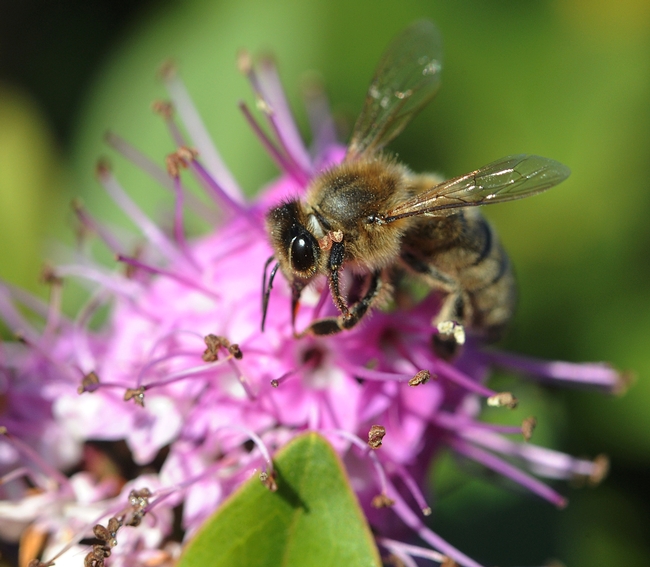
Honey bee foraging on hebe. (Photo by Kathy Keatley Garvey)
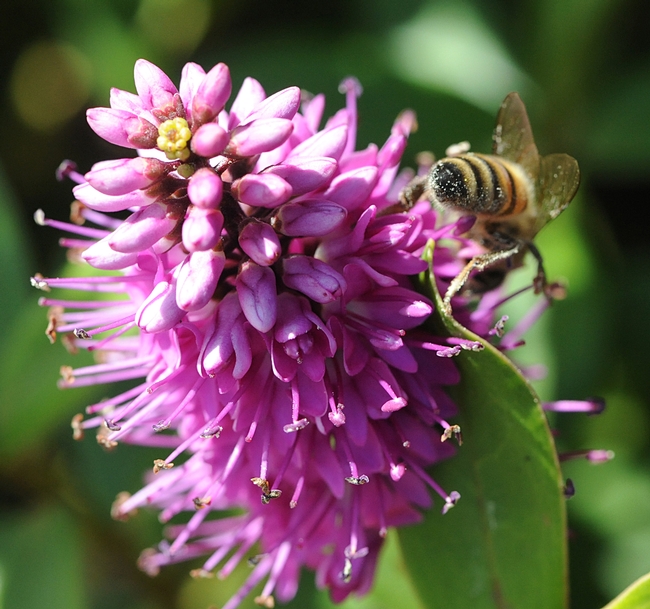
A "she bee" leaving the hebe. (Photo by Kathy Keatley Garvey)
'P' Is for Pollinators
It's good to see the growing number of seminars, lectures and workshops on pollinators.The more we know about our pollinators, the better we'll be...
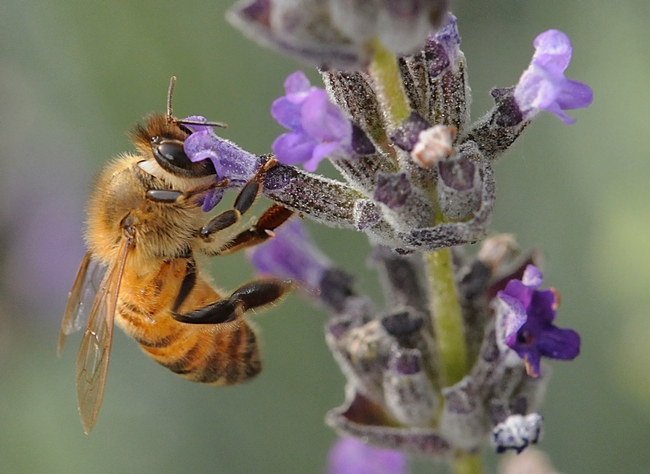
Honey bee foraging on lavender. (Photo by Kathy Keatley Garvey)
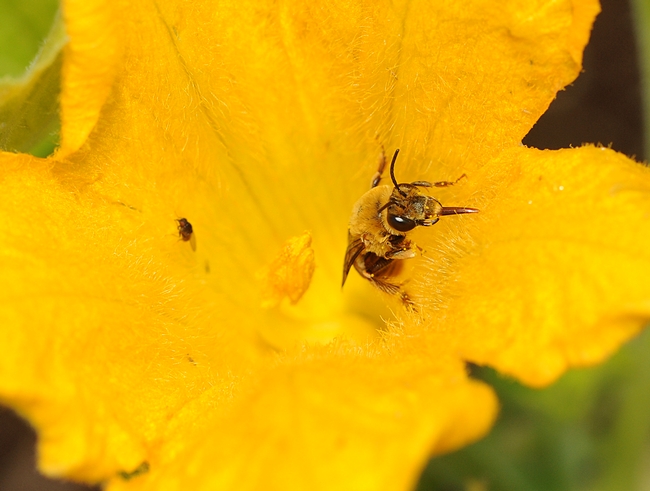
Squash bee (genus Peponapis) on squash. (Photo by Kathy Keatley Garvey)

